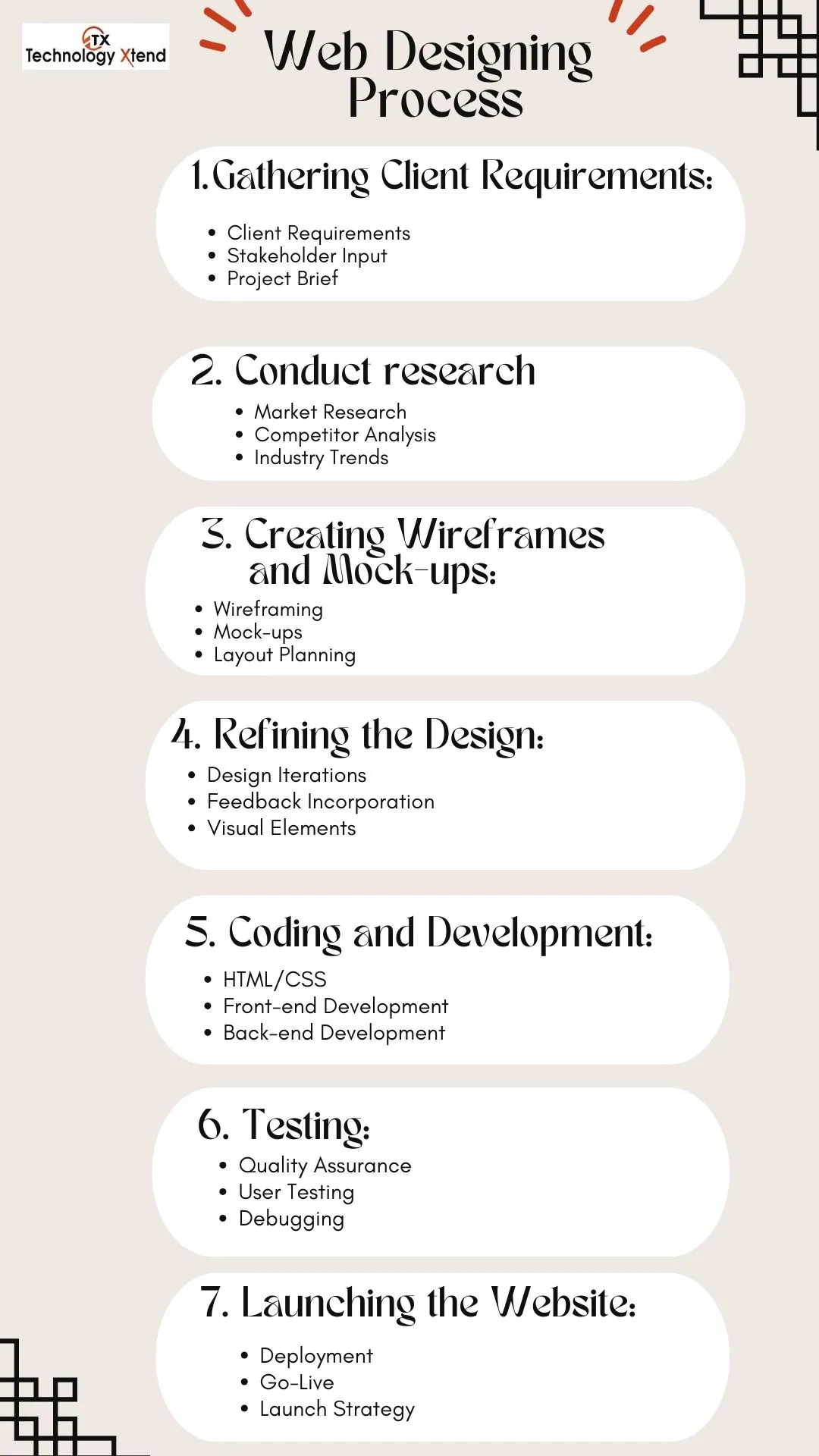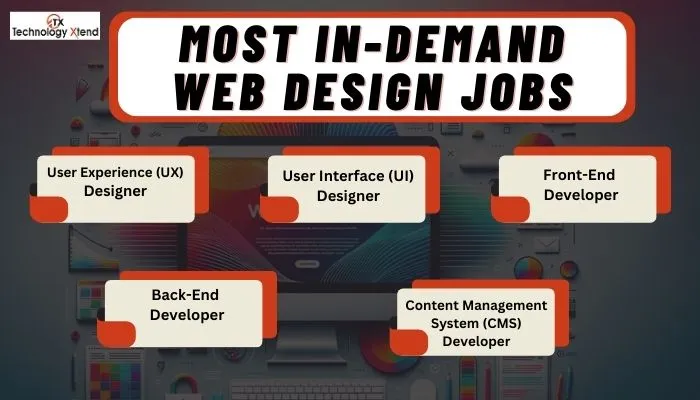
Technology XtendFrequently Asked Questions about Web Designing
Discover the hidden keys to captivating web design, transforming visitors into loyal customers with groundbreaking conversion strategies.
In today's digital landscape, having a visually appealing and user-friendly website is essential for businesses to attract and engage with their target audience. Effective web design not only enhances the user experience but also maximizes conversion rates. In this blog post, we will delve into the frequently asked questions about web design, discussing the key aspects, processes, considerations, trends, and career opportunities. Whether you're an aspiring web designer or a business owner looking to understand the secrets behind successful web design, this post will provide valuable insights.
"Design holds the key to capturing hearts, minds, and clicks. Unlock the secrets to exceptional web design and watch engagement and conversion soar!”
Getting Started with Web Designing
Web Designing is an exciting process that imagines the creation and organization of numerous elements to shape an engaging and visually pleasing website. It is a magnificent blend of art and technology, focusing on producing an online platform that not only captivates the users but also provides effortless navigation and seamless functionality. Web Designing revolves around skillfully manipulating typography, colours, layout, and imagery to present a compelling user interface. This creative discipline necessitates a thorough understanding of user experience, continuously aiming to enhance the visitor's journey on the website. With meticulous attention to detail, a web designer considers every aspect of the design, from the perfect placement of buttons to the impactful use of images, ensuring that each element harmoniously contributes to the overall aesthetic and user interaction. The ultimate goal of web designing is to create a visually alluring online presence that effectively communicates the brand's message and engages the viewer in an immersive digital experience.
A web designer is responsible for conceptualizing, planning, and implementing the visual elements that make up a website. To become a web designer, one needs a combination of creativity, technical knowledge, and a solid understanding of user experience (UX) and user interface (UI) design principles.
Web Designing Process
The web designing process typically involves several key steps. These include gathering client requirements, conducting research, creating wireframes and mock-ups, refining the design, coding and development, and finally testing and launching the website. Content selection and layout creation are crucial aspects of web design as they contribute to the overall user experience and engagement. Additionally, paying close attention to UX/UI design ensures that the website is intuitive, easy to navigate, and visually appealing.

Technical Aspects of Web Designing
Having a solid understanding of programming languages, such as HTML, CSS, and JavaScript, is fundamental for web designers. These languages allow designers to create and customize various elements of a website. Additionally, proficiency in design software, such as Adobe Photoshop and Illustrator, is essential for creating visually appealing graphics and images. Web designers also need to ensure their designs are accessible and compatible with different browsers and devices by using responsive design techniques and conducting thorough testing.
Considerations for Effective Web Design
When designing a website, it is crucial to consider various factors to ensure its effectiveness. These include understanding the target audience, aligning the design with the brand identity, creating a clear and consistent navigation system, optimizing page loading speed, and implementing effective call-to-action elements. A visually appealing and user-friendly interface plays a significant role in engaging users and keeping them on the website. Ensuring intuitive navigation, clean layouts, and appropriate use of typography and colour palettes can greatly enhance the overall user experience.
Also Read - The Art Of Web Design: How To Stand Out In A Digital Crowd
Web Design Trends and Innovations
The field of web design is constantly evolving, with new trends and innovations emerging regularly. Staying updated with the latest design trends is vital for web designers to create modern and visually appealing websites that resonate with the target audience. Some popular trends include minimalism, microinteractions, bold typography, dark mode, and immersive storytelling. To stay up-to-date, web designers can follow leading design blogs, participate in design communities, and continuously seek inspiration from design showcases and industry events.
Collaborating with Clients and Maintaining Relationships
Effective communication and collaboration with clients are essential for successful web design projects. Understanding the client's vision, goals, and requirements is crucial in creating a website that aligns with their brand and objectives. Regular updates, feedback sessions, and clear documentation of project milestones help maintain transparency and manage client expectations. Building strong client relationships involves not only delivering high-quality work but also providing exceptional customer service and support throughout the entire design process.
Career Opportunities in Web Designing
The demand for skilled web designers is continuously growing as businesses recognize the importance of having an online presence. Web designers have various career paths to choose from, including freelance work, working in design agencies, or joining corporate design teams. Building a strong portfolio, gaining experience through internships or freelancing, and staying updated with the latest design trends can significantly enhance career prospects in web design.

Here are a few of the most in-demand web design jobs today:
1. User Experience (UX) Designer : UX designers focus on creating websites and web applications that are user-friendly and enjoyable to use. They conduct user research, develop prototypes, and test different design concepts to ensure that the final product meets the needs of its target audience.
2. User Interface (UI) Designer : UI designers are responsible for the visual look and feel of a website or web application. They work with UX designers to create layouts, choose colours and fonts, and develop other visual elements that make the interface both aesthetically pleasing and easy to use.
3. Front-End Developer : Front-end developers use coding languages like HTML, CSS, and JavaScript to bring website designs to life. They are responsible for the code that runs in a web browser and makes a website interactive.
3. Back-End Developer : Back-end developers work on the server-side of a website, building and maintaining the databases and other systems that make a website function. They may also write code for web applications and APIs.
3. Content Management System (CMS) Developer : CMS developers build and customize websites using content management systems like WordPress and Drupal. They may also work on developing plugins and themes for these systems.
Challenges and Solutions in Web Designing
Web designers face a range of challenges in their work, from managing client expectations and dealing with feedback to working with tight deadlines and technical constraints. However, these challenges can be overcome by maintaining open lines of communication, setting realistic expectations, practicing effective time management, continuously learning and improving skills, and seeking support from the design community. Embracing challenges as opportunities for growth and improvement is crucial in achieving success as a web designer.
Unlock the secrets of effective web design!
Also Read - A Deep Dive into the Sieve of Eratosthenes
Conclusion
Related Articles









































